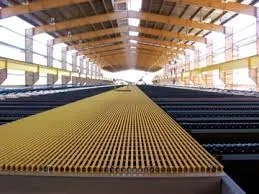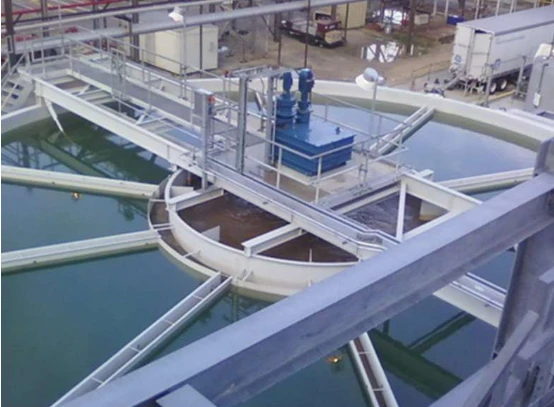
-
 Afrikaans
Afrikaans -
 Albanian
Albanian -
 Amharic
Amharic -
 Arabic
Arabic -
 Armenian
Armenian -
 Azerbaijani
Azerbaijani -
 Basque
Basque -
 Belarusian
Belarusian -
 Bengali
Bengali -
 Bosnian
Bosnian -
 Bulgarian
Bulgarian -
 Catalan
Catalan -
 Cebuano
Cebuano -
 China
China -
 China (Taiwan)
China (Taiwan) -
 Corsican
Corsican -
 Croatian
Croatian -
 Czech
Czech -
 Danish
Danish -
 Dutch
Dutch -
 English
English -
 Esperanto
Esperanto -
 Estonian
Estonian -
 Finnish
Finnish -
 French
French -
 Frisian
Frisian -
 Galician
Galician -
 Georgian
Georgian -
 German
German -
 Greek
Greek -
 Gujarati
Gujarati -
 Haitian Creole
Haitian Creole -
 hausa
hausa -
 hawaiian
hawaiian -
 Hebrew
Hebrew -
 Hindi
Hindi -
 Miao
Miao -
 Hungarian
Hungarian -
 Icelandic
Icelandic -
 igbo
igbo -
 Indonesian
Indonesian -
 irish
irish -
 Italian
Italian -
 Japanese
Japanese -
 Javanese
Javanese -
 Kannada
Kannada -
 kazakh
kazakh -
 Khmer
Khmer -
 Rwandese
Rwandese -
 Korean
Korean -
 Kurdish
Kurdish -
 Kyrgyz
Kyrgyz -
 Lao
Lao -
 Latin
Latin -
 Latvian
Latvian -
 Lithuanian
Lithuanian -
 Luxembourgish
Luxembourgish -
 Macedonian
Macedonian -
 Malgashi
Malgashi -
 Malay
Malay -
 Malayalam
Malayalam -
 Maltese
Maltese -
 Maori
Maori -
 Marathi
Marathi -
 Mongolian
Mongolian -
 Myanmar
Myanmar -
 Nepali
Nepali -
 Norwegian
Norwegian -
 Norwegian
Norwegian -
 Occitan
Occitan -
 Pashto
Pashto -
 Persian
Persian -
 Polish
Polish -
 Portuguese
Portuguese -
 Punjabi
Punjabi -
 Romanian
Romanian -
 Russian
Russian -
 Samoan
Samoan -
 Scottish Gaelic
Scottish Gaelic -
 Serbian
Serbian -
 Sesotho
Sesotho -
 Shona
Shona -
 Sindhi
Sindhi -
 Sinhala
Sinhala -
 Slovak
Slovak -
 Slovenian
Slovenian -
 Somali
Somali -
 Spanish
Spanish -
 Sundanese
Sundanese -
 Swahili
Swahili -
 Swedish
Swedish -
 Tagalog
Tagalog -
 Tajik
Tajik -
 Tamil
Tamil -
 Tatar
Tatar -
 Telugu
Telugu -
 Thai
Thai -
 Turkish
Turkish -
 Turkmen
Turkmen -
 Ukrainian
Ukrainian -
 Urdu
Urdu -
 Uighur
Uighur -
 Uzbek
Uzbek -
 Vietnamese
Vietnamese -
 Welsh
Welsh -
 Bantu
Bantu -
 Yiddish
Yiddish -
 Yoruba
Yoruba -
 Zulu
Zulu
Feb . 13, 2025 03:58
Back to list
Fans & Dampers & Demisters
Fiberglass ducts, renowned for their exceptional resistance against various elements, stand as a cornerstone in modern HVAC systems. This reputation is not unearned; it is built on decades of engineering excellence and real-world performance validation. The use of fiberglass in ductwork offers several distinct advantages, especially when we delve into the realms of resistance, durability, and environmental impact. This piece explores these aspects in depth, showcasing why fiberglass ducts are increasingly favored.
Installation and maintenance of fiberglass ducts are straightforward processes that further enhance their appeal. The lightweight nature of fiberglass makes the transportation and installation of duct sections more manageable compared to heavier metal ducts. This ease of installation reduces labor costs and time, allowing projects to adhere to tight budgets and schedules. Furthermore, the low maintenance requirement of fiberglass ducts means fewer resources are spent on upkeep, creating cost efficiency in the long run. Expert testimonials and user experiences consistently highlight the reliability and longevity of fiberglass duct systems. Facility managers and HVAC professionals often report lower incidences of maintenance issues and system downtime when using fiberglass ducts. This anecdotal evidence is supported by studies that demonstrate the superior lifecycle performance of fiberglass ductwork compared to alternative materials. Beyond performance, the environmental benefits of fiberglass ducts are notable. The production process of fiberglass is energy-efficient, and many manufacturers are now adopting sustainable practices, reducing the carbon footprint associated with their products. This environmental consciousness aligns with global efforts towards greener construction practices, making fiberglass ducts a preferred choice in sustainable building projects. Ultimately, the use of fiberglass ducts in HVAC systems underscores a commitment to quality, efficiency, and sustainability. Their exceptional resistance against various physical and environmental factors ensures that they remain a trustworthy component in the infrastructure of modern buildings. As the demand for high-performance, low-maintenance HVAC systems grows, fiberglass ducts are set to play an increasingly critical role in shaping efficient and eco-friendly indoor environments. The informed choice of incorporating fiberglass ductwork is not merely a decision; it is an investment in enduring quality and sustainability.


Installation and maintenance of fiberglass ducts are straightforward processes that further enhance their appeal. The lightweight nature of fiberglass makes the transportation and installation of duct sections more manageable compared to heavier metal ducts. This ease of installation reduces labor costs and time, allowing projects to adhere to tight budgets and schedules. Furthermore, the low maintenance requirement of fiberglass ducts means fewer resources are spent on upkeep, creating cost efficiency in the long run. Expert testimonials and user experiences consistently highlight the reliability and longevity of fiberglass duct systems. Facility managers and HVAC professionals often report lower incidences of maintenance issues and system downtime when using fiberglass ducts. This anecdotal evidence is supported by studies that demonstrate the superior lifecycle performance of fiberglass ductwork compared to alternative materials. Beyond performance, the environmental benefits of fiberglass ducts are notable. The production process of fiberglass is energy-efficient, and many manufacturers are now adopting sustainable practices, reducing the carbon footprint associated with their products. This environmental consciousness aligns with global efforts towards greener construction practices, making fiberglass ducts a preferred choice in sustainable building projects. Ultimately, the use of fiberglass ducts in HVAC systems underscores a commitment to quality, efficiency, and sustainability. Their exceptional resistance against various physical and environmental factors ensures that they remain a trustworthy component in the infrastructure of modern buildings. As the demand for high-performance, low-maintenance HVAC systems grows, fiberglass ducts are set to play an increasingly critical role in shaping efficient and eco-friendly indoor environments. The informed choice of incorporating fiberglass ductwork is not merely a decision; it is an investment in enduring quality and sustainability.
Next:
Related Products









